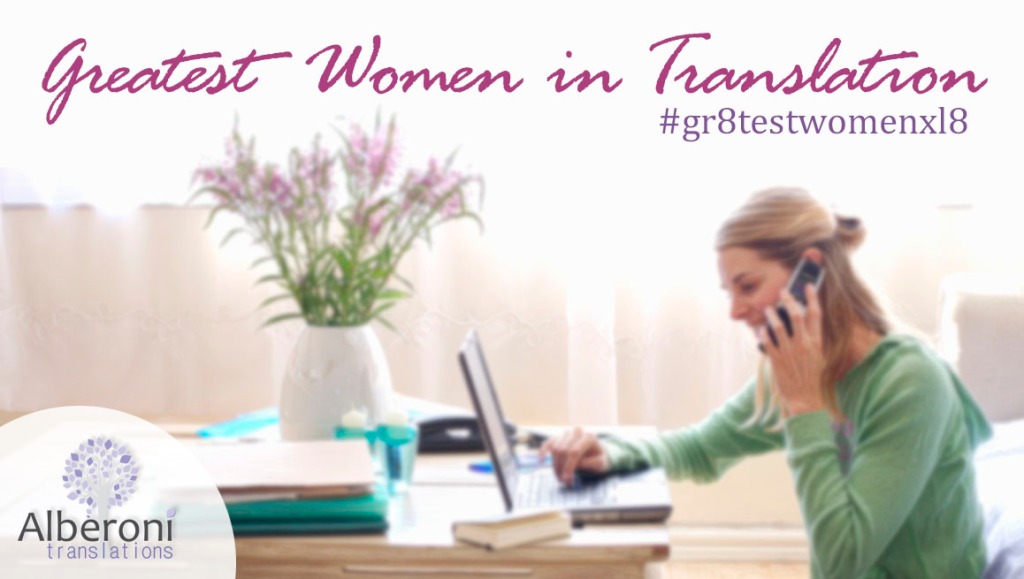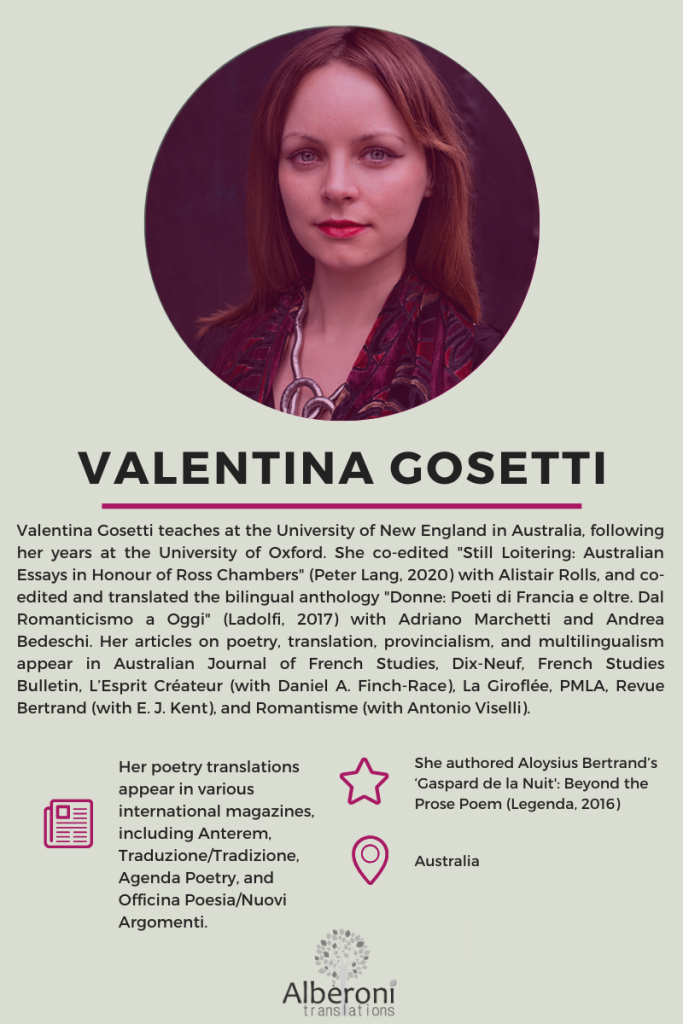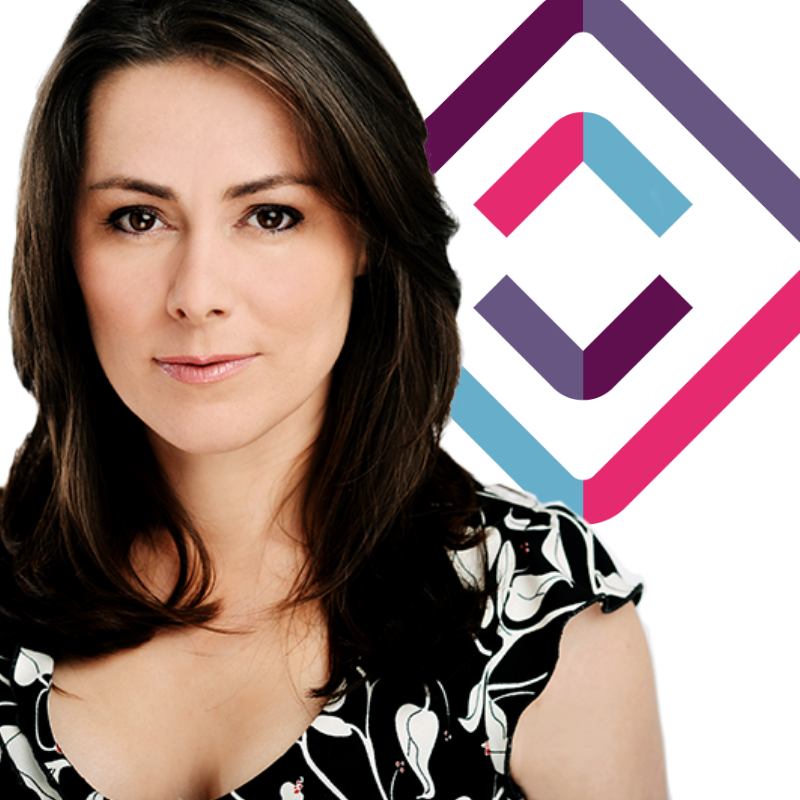Welcome back to our Greatest Women in Translation interview series!
This month we have two interviewees who work together and, therefore, were also interviewed together, Nina Parish and Emma Wagstaff, both nominated by Valentina Gosetti.
Welcome, Nina and Emma!
1. Why don’t you both start by telling us how you got into translation?
Nina: As an academic in French Studies, translation has been an important part of my training. I was taught translation as an undergraduate at Royal Holloway; I wrote one of my dissertations for a Masters in Aix-en-Provence on a translation of a poem by Blaise Cendrars by Dos Passos and now I have been teaching translation for a number of years at undergraduate and postgraduate level at the University of Bath and more recently the University of Stirling. It’s one of my favourite areas to teach – it’s such a good way of understanding and working really closely with texts and language. At Bath, I was Director of Studies for the Masters in Interpreting and Translating and this role taught me so much about the workings of this professional world ranging from the exhilarations of interpreting at the UN to the vital task of careful proof-reading.
Emma: I don’t have as much of a background in translation as Nina does, though I was thrown into the deep end on arriving in my current job where I had to teach translation theory, sometimes only being one week ahead of the students in the textbook! I also enjoy teaching translation: it’s popular with students for its practical side, and it’s an opportunity to discuss interesting and challenging texts. I have increasingly found myself thinking and writing about translation, because the French poets I have studied, including André du Bouchet and Philippe Jaccottet, were themselves translators and wrote fascinating reflections on translation and on the interrelationship between poetry and translation.
2. You run a poetry network together. Could you tell us a bit about it?
We ran a poetry network together – Contemporary poetic practice in French: an interdisciplinary approach – from 2012 to 2015. The website for this network is still up and running but we don’t update it as much as we’d like anymore. Thanks to funding from the UK’s Arts and Humanities Research Council, we were able to organize a series of six workshops on poetry, politics and philosophy at the University of Oxford, poetry and translation at the Centre international de poésie Marseille (CipM), poetry and new technologies at the University of Bath, poetry and visual arts at the University of Cambridge, poetry, music and performance at the University of Birmingham, and in conjunction with the Birkbeck Centre for Research in the Aesthetics of Kinship and Community, ‘Les Nouvelles écritures politiques: le poète dans la communauté’ at the University of London. We welcomed university academics and artistic practitioners from Great Britain, The Republic of Ireland, France, Belgium, Italy, and North America to these workshops which were also accompanied by poetry readings and performances, a translation workshop, an exhibition, and the composition of a new musical work for which we hosted the premiere (and at which Emma and I had our first terrifying experience of live interpreting at a public event!). We wanted to find out who was working on poetic practice in French and how they were going about it and it was a really rich experience. Translation was a common thread throughout these workshops – between different languages, but also different disciplines and forms – and the practical translation workshop that we organised at the CipM, led by Stephen Romer and Jennie Feldman, was a real highlight underlining the intellectual challenges of translating poetry but also the very human challenges of working collaboratively on this type of task.
3. You both have also co-edited an anthology, Writing the Real: A Bilingual Anthology of Contemporary French Poetry. Could you also tell us a bit about it, including how you worked together in writing it?
This anthology was an unplanned but very welcome result of our network. The volume was commissioned by Enitharmon Press and it was the writer and academic Jérôme Game (whose work features in the anthology) who put us in touch with Stephen Stuart-Smith at Enitharmon. Our brief was to include a few pages of text from each of 15-20 French poets who, if not young, were at least ‘young at heart’ and considered their work political. The texts included are not all overtly political in terms of content, but the poets would be clear that their writing is a political act.
We came to decisions about what to include through reading the poets’ work, in discussion with one another, and by asking the advice of people we know with extensive knowledge of the comptemporary scene. Eric Giraud, who was then working at the CipM, was particularly helpful. Some of the translations had previously been published in the US or the UK. We didn’t quite achieve our aim of parity between men and women poets, though the translators are predominantly female; there is work to be done on that disparity. With nearly half of the poets being women, our anthology stands out from recently anthologised poetry in France: there are fewer published female poets, and those women tend to resist attention being drawn to their gender.
The contemporary dimension of the anthology not only affected the choice of texts but also the process of translating and editing them, because we were able to consult the poets themselves (in all but one case) on the particular pieces to be included and follow up their suggestions for translators. The translators could then discuss their approach with the poets.
We took the decison to each translate the work of one poet: Emma translated Philippe Beck and Nina translated Anne-James Chaton. We also co-wrote the introduction which provides some context about the contemporary French poetry scene and introduces the various tendencies within it.
The anthology is currently sold out but it will be available electronically in the next months via the Enitharmon website.
4. Nina, I was particularly interested in your “work on representations of difficult history, the migrant experience and multilingualism in the museum space,” as stated on your page. Could you tell us a bit about it?
Questions around representation in museums in terms of both form and content has become a strong focus of the research that I now do. I’ve been fortunate to be part of some really interesting projects exploring these areas in the last few years.
I collaborated on the Horizon 2020-funded Unsettling Remembering and Social Cohesion in Transnational Europe (UNREST) project. With colleagues from the UK, Germany, Spain, Denmark and Poland, we tested a new mode of remembering – agonistic memory – through empirical fieldwork in war museums and sites of mass exhumations. Throughout the three years of this project (it finished at the end of March 2019), we visited a lot of war museums and spent a lot of time thinking about how to represent difficult history within the museum space. We even developed our own exhibition, Krieg. Macht. Sinn., which opened at the Ruhr Museum in Germany on 11 November 2018.
I’ve also spent time in Australia working with Dr Chiara O’Reilly from the University of Sydney firstly on a project to do with telling migrant stories in the museum where we compared how a range of different Australian museums, from federally-funded to volunteer-run, approached this kind of task. More recently we have been working on questions of memory and place particularly in relation to the centenary commemorations of World War One in Australia.
The modern museum, more often than not, is associated with sight, with the (male, heterosexual, European) gaze. But experiential new museology and innovative soundscapes as a key part of exhibition space mean that our relationship to sound and language within the museum space has changed. Our accoustic experiences of the world can be included, and when it comes to representations of language these will inevitably be multilingual. As a modern languages researcher, I am keen to find out how this multilingual experience has been and can be better represented in the museum.
5. Emma, you “teach on a range of courses in French Studies, with a particular focus on translation, modern texts and visual art,” as stated on your page. Could you tell us a bit more about how you combine all of them?
I’m not necessarily expected to combine them, but in fact I find that there are lots of overlaps. For instance, I have taught a specialist option for a number of years on the links between writers and artists in the modern period. Students engage very well with the notion of ekphrasis and sometimes suggest it is a kind of translation between media. I have also taught sessions on Pierre Reverdy in a cross-language course on European Modernism. This is delivered in English because students do not necessarily study French. I find that they are interested in discussing the implications of studying poetry in translation.
The research I have been working on recently – a book on André du Bouchet – considers his response to art by his contemporaries and artists from earlier periods, including engravings by Miklos Bokor, Nicolas de Staël, and the seventeenth-century Dutch artist Hercules Seghers. I devote a chapter to his translation practice, including in particular his translation of poetry by Paul Celan and his ‘Notes on Translation’ inspired by Ossip Mandelstam. Poets who edited or contibuted to the literary and cultural review L’Éphémère (1967-72), including Du Bouchet, Jacques Dupin, Yves Bonnefoy, Michel Leiris, and Louis-René des Forêts, created a review in which poetic texts in French sat alongside translated pieces and were interleaved with drawings and engravings.
In our poetry network, to which, as Nina says, translation became integral, we found that when crossing boundaries of genre and media, poetry quite naturally also moves between languages.
6. Valentina Gosetti, our previous interviewee, who nominated you both, told us your “collaborative work is brilliant” and you are “a constant source of inspiration.” Could you tell us a bit more about how you work together and why you think this collaboration works so well?
Nina: Valentina is too kind! Nearly all the work I do now is collaborative – I really enjoy working with people. But the collaboration with Emma is very special to me. We’ve known each other for many years – Emma is a friend too – we met as PhD students working on modern poetry in 1999 or 2000 – and have kept in touch ever since. We have quite different personalities which complement each other and that is very helpful when you’re working on projects which require a vast range of skills. We are able to divide tasks fairly and I never feel hard done by or under pressure when I work with Emma – that may well be because she is quietly doing most of the work! Emma is a brilliant, extremely erudite, very modest woman. She also has a good sense of humour which is crucial.
Emma: Nina, in turn, is too kind – and I certainly don’t do most of the work! One of the reasons it’s so easy and enjoyable to work with Nina is that we seem to understand each other, and are therefore able to divide up tasks between us while being aware that sometimes one of us will have other urgent priorities. Our friendship and partnership over the last twenty years have been enormously important to me: spending time with Nina is one of the main reasons I enjoy academic research, and she is a role model for women – and everyone – in academia for the energy and acumen she brings to any event or project. Our generation has seen a shift from the ‘lone scholar’ model in Arts and Humanities research to the requirement to work in new, collaborative ways, and it can sometimes feel hard to adapt to that way of envisioning research. I’ve found that working with Nina, and observing from outside how she has been involved in successful, innovative team-led projects, have helped me see the potential and benefits of collaborative research.
We should add that we also find Valentina inspirational in her enthusiastic promotion of poetry and translation!
7. Now it’s your turn to nominate our next Great Woman in Translation.
Marcella Durand. We came across Marcella’s brilliant translations of Michèle Métail when we were working on a chapter about translating poetry and constraints. She was so generous and attentive to our questions that we look forward to working with her again.








 Tanya Quintieri is a ProZ Community awarded mentor and German/English translator based in the Czech Republic. She’s the initiator of the 1,000,000 Miles Challenge, the Be The Change initiative, contributing member of The Language Mastermind and The Translation Mastermind, and a mother to three beautiful children. She loves Corsica and Salsa, dislikes online bullies and low quality food, and enjoys networking both online and offline. For more information about her,
Tanya Quintieri is a ProZ Community awarded mentor and German/English translator based in the Czech Republic. She’s the initiator of the 1,000,000 Miles Challenge, the Be The Change initiative, contributing member of The Language Mastermind and The Translation Mastermind, and a mother to three beautiful children. She loves Corsica and Salsa, dislikes online bullies and low quality food, and enjoys networking both online and offline. For more information about her, 



